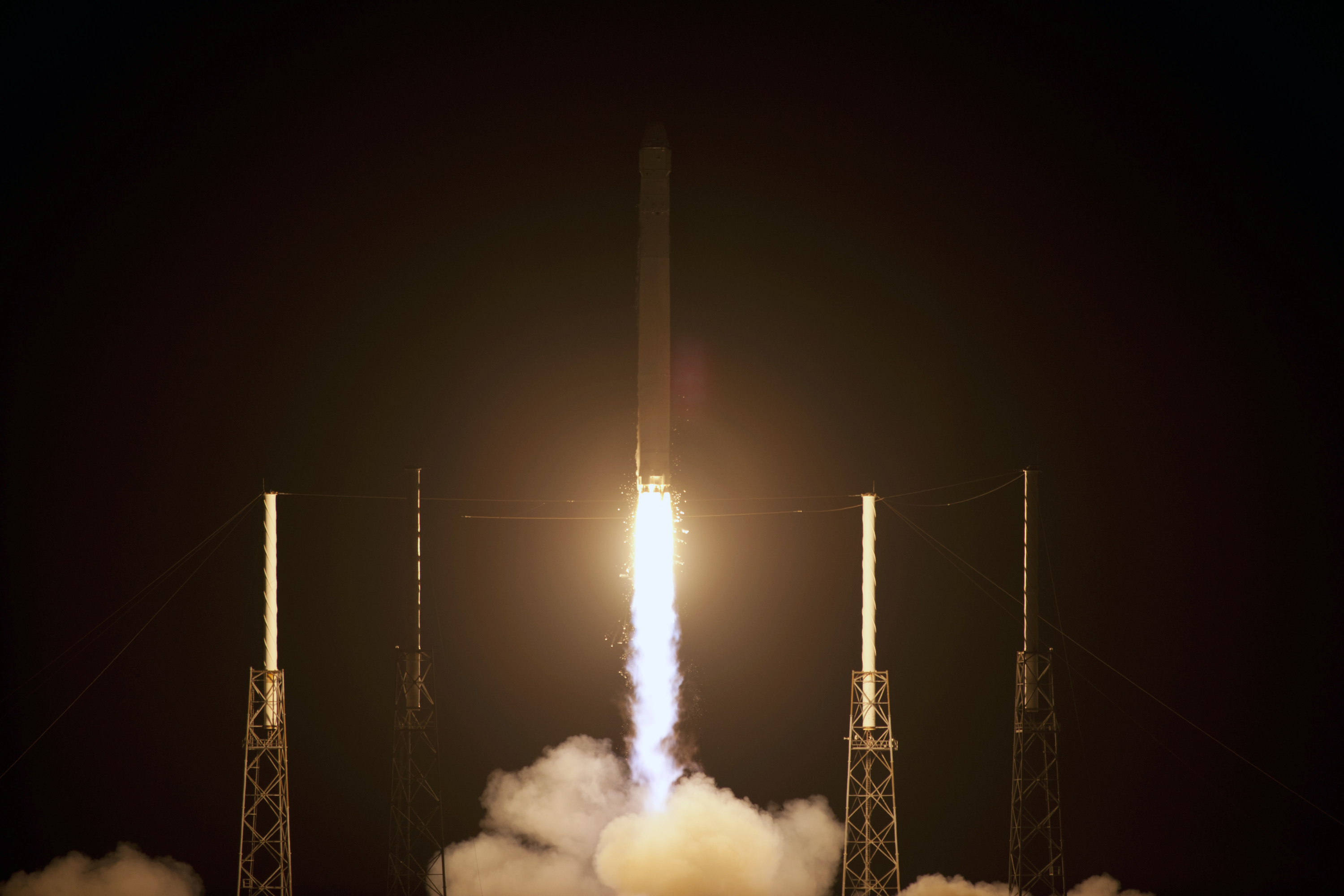
This Week in Rocket History is a launch I’ve wanted to cover for a long time, the one that got me interested in spaceflight, SpaceX’s COTS 2+.
Back in ye olde days of 2006, NASA started a program for private companies to launch cargo to the International Space Station (ISS). This was necessary because of the pending retirement of the Space Shuttle. NASA thought that cargo delivery to the ISS was a good starting point for future commercial use of Low Earth Orbit. It would also free NASA to do more important things in deep space.
The program started with six companies receiving funding from 21 proposals received. These were narrowed down to two in 2008: SpaceX and Orbital Sciences. Orbital Sciences is well known for developing the Pegasus, the first commercial orbital rocket, which first flew in 1990. At the time of the contract award, SpaceX had not launched a single Falcon 1 successfully, so NASA was taking a bit of a gamble by awarding them a contract. The COTS contract was critical for early SpaceX, according to President Gwynne Shotwell: We would not be the company that we are today without the support of NASA.
The COTS program required several demonstration missions before a Dragon could visit the ISS. SpaceX had to prove that the capsule could go to orbit and back safely. It was up to SpaceX and Orbital Sciences to propose and NASA to approve what milestones these missions would demonstrate.
The rendezvous system, called DragonEye, was demonstrated on two of the last Space Shuttle missions, STS-127 and 133.
The first flight of the Falcon 9 in 2010 carried an instrumented nose cone shaped like a Dragon but no real payload.

The second flight of Falcon 9, also in 2010, carried a real Dragon capsule capable of surviving reentry, but only a partially functional trunk. At the end of the mission, it successfully landed, making SpaceX the first private company to recover something from orbit.
The next demonstration would see a Dragon approach very close to the ISS and then berth with the station a day later. The original plan was for the rendezvous and berthing to be on separate missions, but SpaceX convinced NASA that combining the objectives was better. Having to build only one capsule and rocket also saved a lot of money because at this point neither Falcon 9 nor Dragon was reusable.
COTS 2+ was the last of Dragon’s orbital demonstration missions and would result in SpaceX becoming the first private company to visit the International Space Station. I’m very carefully not saying ‘docking’ because Cargo Dragon 1 was not capable of doing this. Instead, it would maneuver to a few meters from the station, where it would be grappled by the Canadarm controlled by an astronaut and attached to the station.
The modified COTS 2+ mission launched on the third flight of Falcon 9 on May 22nd, 2012. I was in middle school. [Ed. note: Oh, that’s cute.]
It would spend almost ten days in space, six of those attached to the ISS. During the first three days of the mission, SpaceX first demonstrated different systems on Dragon while it was hundreds of kilometers from the ISS. Later, Dragon flew 2.5 kilometers under the ISS without stopping, while the crew verified that they could command Dragon by turning on its strobe light. After this, NASA cleared it to approach for real the next mission day.

After several planned holds in its approach as it got closer, Dragon was finally given permission to approach the capture point 9 meters from the station. Astronaut Donald Petitt grabbed Dragon for the first time and attached it to the station. The approach was tense because the rendezvous system was confused by a reflection from one of the modules, but SpaceX quickly uploaded a fix.
Once the spacecraft was attached, the astronauts first needed to ensure it was safe to enter. The station’s air is very important, and there are many procedures to follow before opening a capsule’s hatch. Once that was done, the station crew unloaded the cargo. After the capsule was unloaded, it spent a few more days at the ISS while astronauts packed it with cargo for return. Then, it was removed from the ISS and returned to Earth. NASA observed the spacecraft’s reentry with infrared cameras to gather data. After splashdown, it was taken to the company’s testing center in McGregor, Texas, for processing.
Dragon was officially certified to carry cargo to and from the ISS on August 23rd, 2012. The COTS 2+ capsule is on display at the SpaceX HQ, hanging from the ceiling in front of the employee cafeteria. If you watch a SpaceX stream, you can sometimes see it in the background.
More Information
PDF: Commercial Orbital Transportation Services (NASA)



